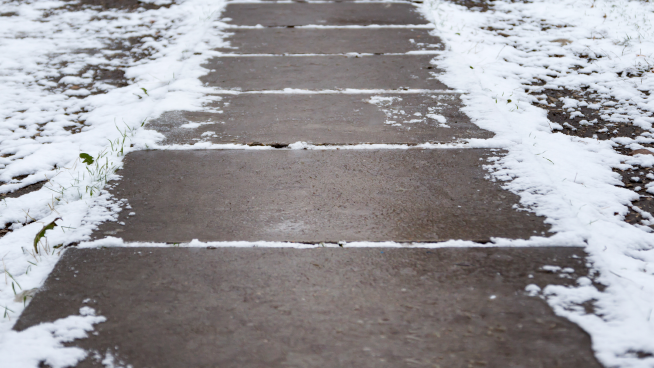Companies such as A1 Concrete Leveling in Southeast Michigan can level those slabs and make them safe again for about a quarter of the price of replacement. Rock salt attacks concrete and using it can damage concrete and harm the indoor environment when tracked inside.
Instead, we suggest using a mixture of 50% sand and 50% magnesium chloride. Magnesium chloride is better for pets and plants and concrete.
Go to your local hardware store and buy a bag of kids’ play sand, magnesium chloride ice-melter, and a 5-gallon bucket with a lid. Mix them together in the bucket and use an old soup can or cup to spread the mixture when needed.
Be sure to keep the lid on as the mixture tends to absorb moisture from the air and gets hard. Take steps to assure you won’t track any ice-melter into the home.
Robert in Saint Clair recently purchased a house in Florida for the winter months and intends to maintain his Michigan home as well. He wants to know if he should fully shut down his home when not there and how to properly leave it for the best outcome when he returns. Technology today allows homeowners to keep a close eye on their properties even when they’re across the country. Remote sensors with water shut-off systems can reduce the chances of freezing pipes and water damage.
In the Michigan home, we would suggest setting the water heater to vacation mode and turning down the house thermostat to the low fifties. It’s important to disconnect all exterior hoses, shut off water to bibs from the inside, and use Styrofoam insulation “cups” over exterior water spigots.
Insulation around water pipes in the basement and crawlspace is beneficial, and opening house doors and cupboard doors under sinks where plumbing is accessible is advised. In the Florida home, the main concern would be stagnant air that could cause mold.
Keep the air conditioning running, even at a relatively high temperature setting. Running ceiling fans, and even box fans at low settings to keep the air moving, is highly recommended.
Check our archives for articles written specifically about this issue. Lauren from Grand Blanc asks how to prevent ice dams. Despite having contractors check her insulation and ensure correct gutter angling, she still gets ice dams on the northeast side of her lower roof during extreme weather. Ice dams often form in valleys above overhangs, especially in areas that receive little afternoon sun. Keeping gutters clean and maintained can help.
In the right conditions ice dams may still form, and homeowners can consider using mechanical devices like heat cables. Professional installation is recommended for the specific area needed. If an ice dam has formed and there’s little chance of it melting on its own, the Guys suggest homeowners fill a thin sock or stocking with an ice-melter like magnesium chloride. This can be used to melt a small channel through the ice so that the water can drain and prevent further buildup.
Simply fill the sock halfway, tie a long string to close the open end, and throw it over the ice dam without using a ladder while letting the string hang down within your grasp from the ground. After a day or two, when the ice has melted, pull the string to remove the sock.Winter preparation is crucial for homeowners, and taking these steps can help protect your home from potential damage caused by freezing temperatures, ice and snow.
Keep in mind you can find professionals to help with these issues and others at the InsideOutsideGuys.com.








